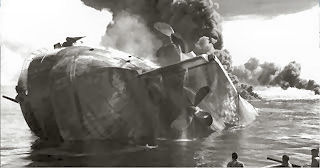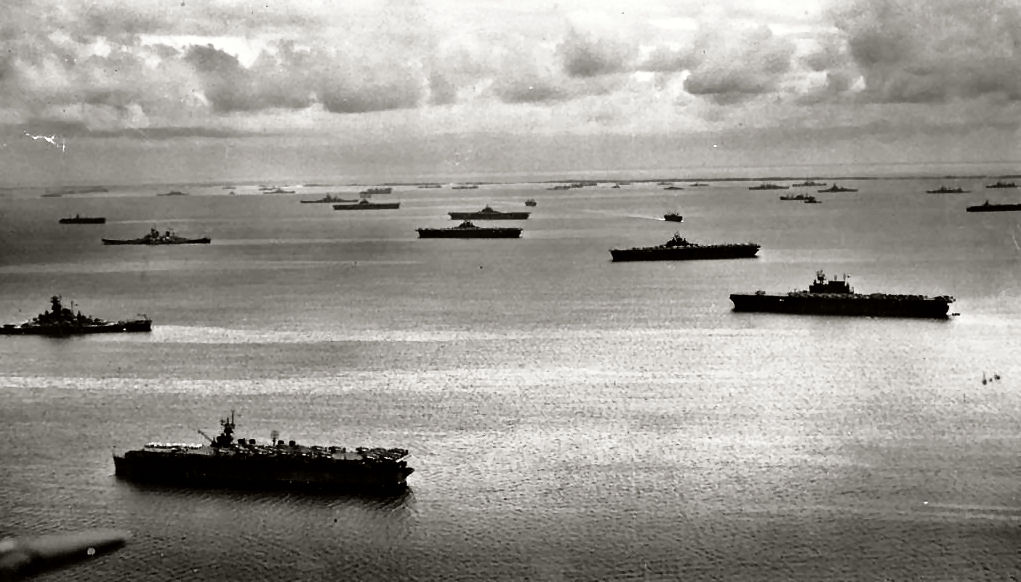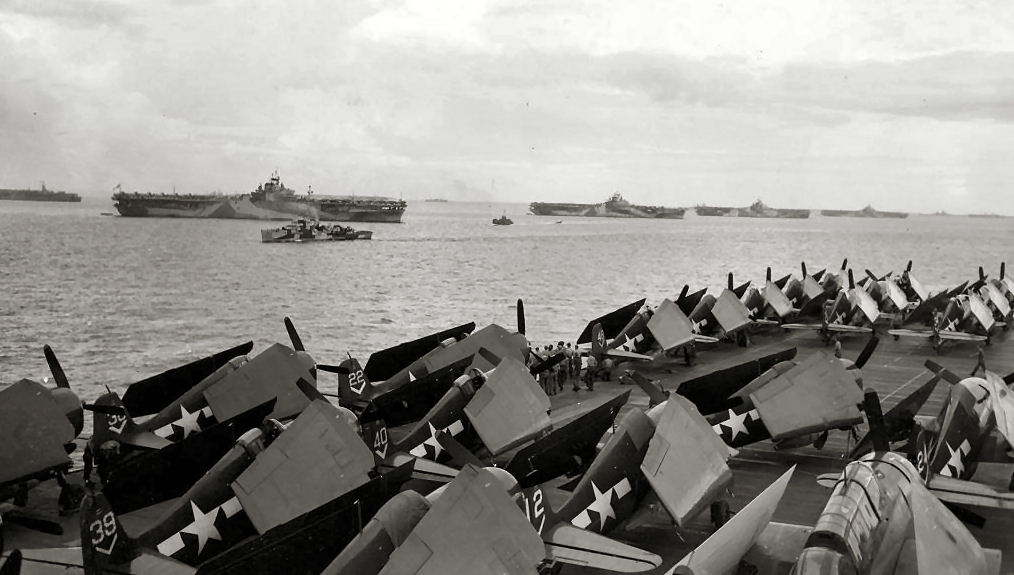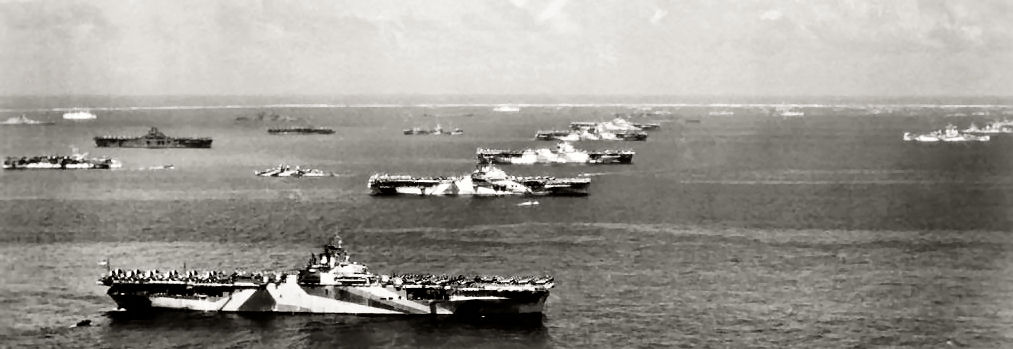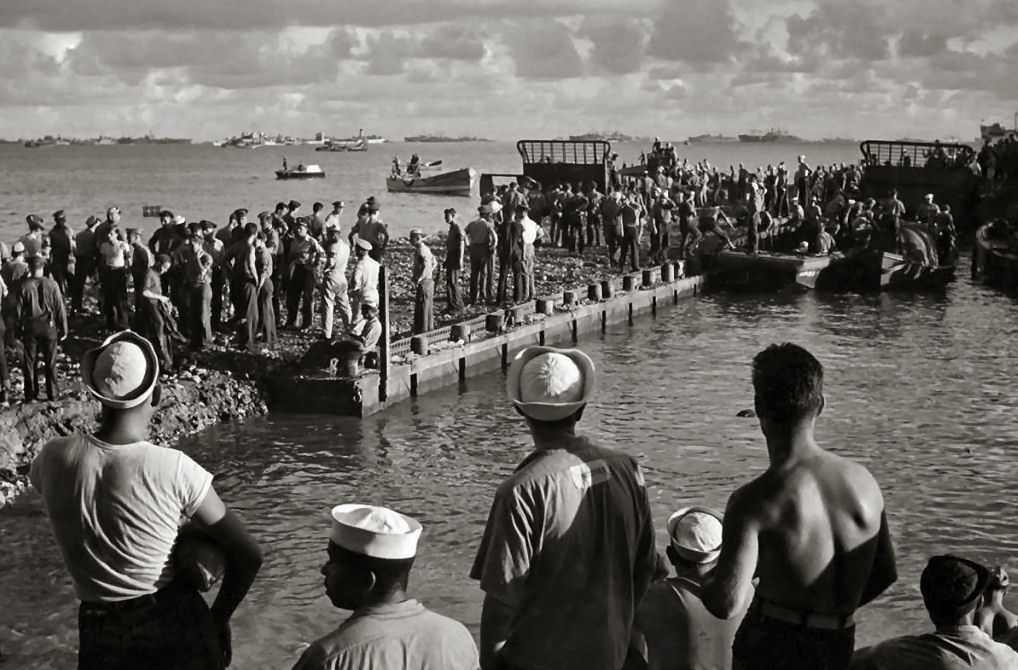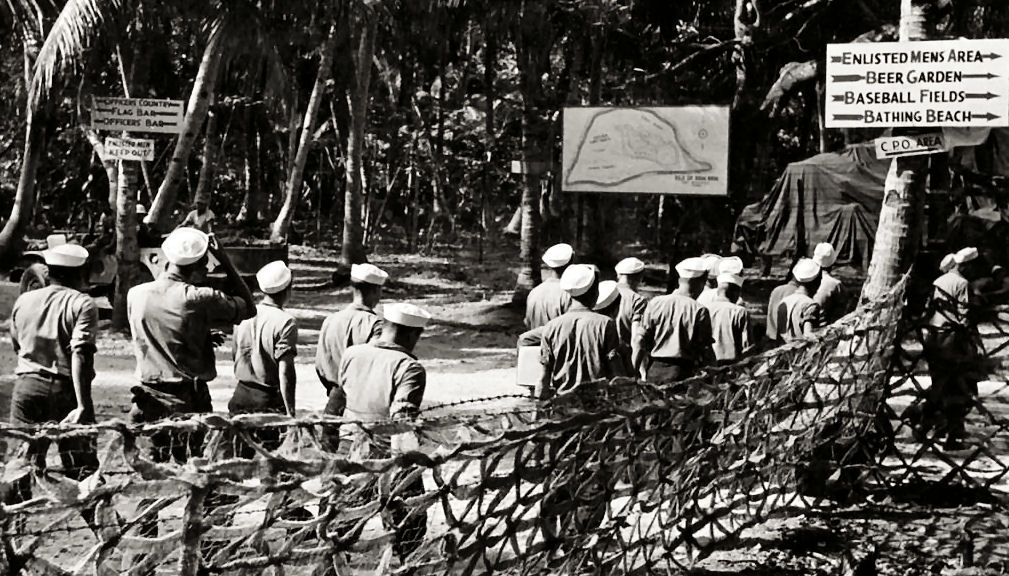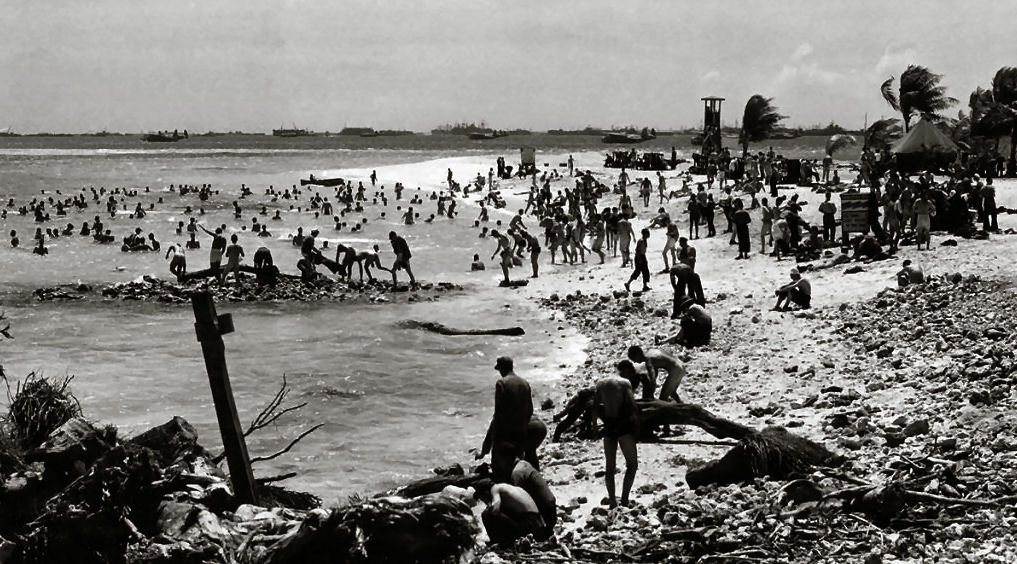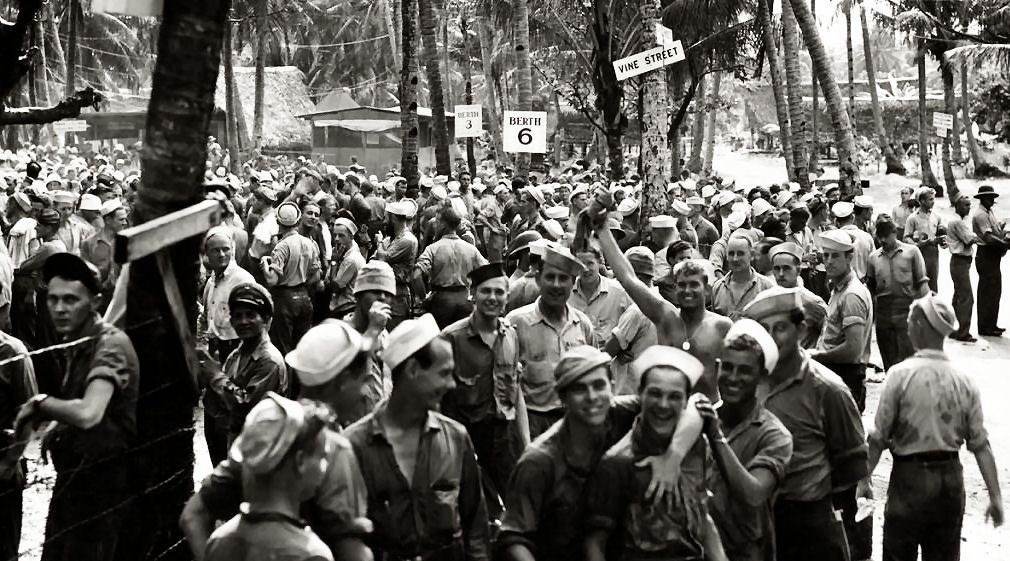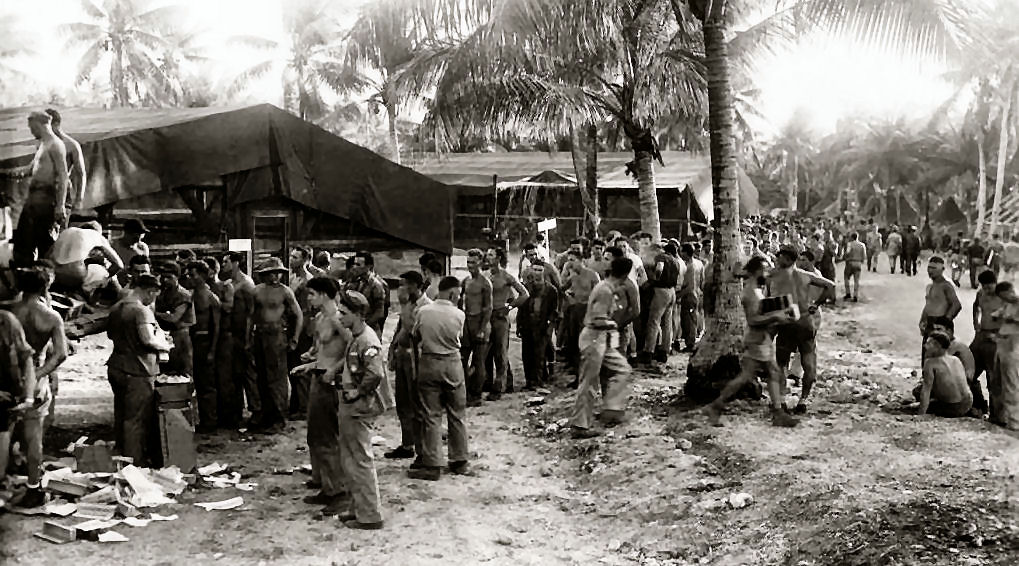|
|
|||
|
Privacy Policy | Editorial Policy | Profit Policy | Join the Association | List of Members | Contact us | Index | Links |
|||
|
Back Go to page: 1 2 3 4 5 6 7 8 9 10 11 12 13 14 15 16 17 18 19 20 Forward |
|||
|
Flying the old ones.
John Laming. |
|||
|
|
|||
|
Four Merlins to Momote.
On March 19, 1958, my crew was scheduled to fly a Lincoln heavy bomber
from Townsville in Queensland, to the Admiralty Islands, about 400 klms
north of Madang in PNG. The Lincoln was a larger version of the British
wartime Avro Lancaster and equipped with four Rolls Royce Merlin liquid
cooled engines. Manus Island was part of the Admiralty group and a major
Japanese military base during the Pacific war. After Allied forces swept
through the Western Pacific in 1944, Manus Island became a staging post
for US forces attacking the Japanese stronghold on Pelileu in the
Western Caroline Islands. After the war, the Royal Australian Air Force
operated the air base at Momote on the eastern side of the island group.
The coral airstrip was 5200 ft long, ending at a coral reef at one end
and a
The crew of the Lincoln, with the author at back row centre.
Nearby revetments held several derelict Douglas Dauntless dive bombers, left behind in 1945. Bullet holes had punctured the tyres, instruments stolen for souvenirs but with a lot of TLC they could have been made airworthy. If I knew then, what I know now about the future value of those machines, I would have bought them on the spot and taken them back home for restoration. But for now they remained behind as battered but still proud reminders of the savage carrier-borne air battles of the Pacific war. Some years after the Australian military abandoned the airstrip, a team of enthusiasts arrived from America to ship the old dive-bombers back to USA. I am glad their story had a happy ending.
In 1958, Guam and the US base at Clark Field in the Philippines represented the main strategic American presence in the Western Pacific region, and the Australian government decided to close down Momote air base leaving a small team of aviation staff to administer inter-island civil flights. Many RAAF married quarters still held valuable material such as furnishings and roofing tiles and it was decided to transport these back to Townsville. For this task, freight panniers were attached to hard points in the bomb bay of our Lincoln.
The 1,000-mile flight to
Momote was planned initially over Port Moresby on the southern coast of
New Guinea. In 1942, during the early part of the Japanese campaign to
occupy New Guinea, Port Moresby had been the target of constant air
attacks by the Japanese. It had a good shipping harbour which was used
by Australian and American forces as they built up personnel and
supplies from Australia to defend against the threat of Japanese
invasion. Jungle clad mountains in this area rise above 13,000 feet. In
the Lincoln, our crew donned oxygen masks as the aircraft climbed
laboriously to clear them. Once clear of the northern coastline of New
Guinea at the wartime airstrip of Kokoda, near Morobe, a left turn takes
the Lincoln abeam the former Japanese occupied base of Lae. From this
position the direct track to Momote cleared the mist-covered mountains
of the Huon
The route of the Lincoln to Manus Island, 1958.
If the Battle of Britain was a defining moment of World War II in 1940, the Battle of the Bismarck Sea was its equivalent on the other side of the world in 1943. Then, an armada of Japanese troop ships sailed into the Bismarck Sea from Rabaul in New Britain to reinforce Japanese held Lae. Hugging the northern coastline of New Britain and hidden by low cloud and torrential rain, the transports and escorting warships were spotted by Allied reconnaissance aircraft. As the convoy entered the Vitiaz Strait on its final run into Lae, it was attacked by Bostons and rocket firing Beaufighters of the RAAF and finally finished off by Mitchells and Flying Fortresses of the USAAF. Few ships escaped the carnage and thousands of Japanese troops were lost. The Battle of the Bismarck Sea was truly a turning point of the war in the Pacific.
Meanwhile, back to present day and after passing over the Owen Stanley ranges to the north of Kokoda, we descended back to 10,000 feet and took off our oxygen masks. In 1943, I was an 11-year old school boy living in England. The Battle of the Bismarck Sea meant nothing to me in those days, preoccupied as I was with spotting the occasional German Dornier 217 bomber that flew in at low level over my home in Kent, dropping bombs and belting back to France. Now, in our old Lincoln bomber, the crew was lost in thought, silently contemplating the scene far below where scattered white cumulus drifted gently over the Bismarck Sea, the last resting place of many ships and men.
Two hours later, we landed at Momote air base, where we stayed for two days while the aircraft was serviced and roofing tiles loaded in the freight panniers in the bomb bay. We slept under mosquito nets in the stifling heat, and during the day I explored the cockpits of the Dauntless dive-bombers that I had seen in revetments as we were coming in to land. Fortunately, I didn’t see the large jungle spiders that were known to live in thick webs behind the instrument panels. Neither did I see any crocodiles, although the odd loud splash from the local swamp indicated that something was out there.
The return flight to Townsville was planned as an OFE (Operational Flying Exercise). Estimated flight time was ten hours. The route was low level over the sea at 1500 feet eastward to Kavieng on New Ireland, then southeast to the former Japanese military stronghold of Rabaul on northern New Britain. From there we planned over Samarai Island at Milne Bay on the south-eastern tip of New Guinea and thence directly to Townsville. Milne Bay was the scene of another disaster to Japanese forces in August 1942 where they were defeated by Australian troops and RAAF pilots flying Kittyhawk fighters.
On our trip, any ships were to be photographed and their description reported by high frequency radio in code to RAAF Headquarters at Townsville. This was always a convenient excuse for a low pass and beat up. Officially, beat ups were frowned upon, but only if you killed yourself. While I had not flown this route out of Manus Island before, I knew from previous trips in the region we could expect to see the occasional wreck of Japanese or Allied aircraft on the beaches of various remote islands. In fact, only four years earlier, while searching for a missing Royal Air Force Canberra bomber to the north of Kavieng in New Ireland, we spotted what we thought was a yellow rubber dinghy. To get a closer look we flew over it at 50 feet and realised it was a wartime shipping mine covered in rust but still possessing those dangerous explosive horns. Fortunately it could not have been a magnetic mine otherwise this story would not have been written.
Back at Momote with the bomb
bay panniers full of roofing tiles and the wings brimming with fuel the
Lincoln used up the full length of the 5200 ft runway. There were no
take-off performance charts in those days and the Lincoln was held on
the runway until the last second. On a tropical day we would barely
reach lift off speed of 105 knots before the ocean would flash
underneath us leaving a swirl of propeller slipstream on the water. This
1958 was “a very good year for beat ups,” and the Lincoln buzzed Momote on the way out.
The closure of the base meant that ours was probably the last Lincoln out. In view of this auspicious occasion, we had been given the nod on the evening before by a senior officer to beat up the airstrip on departure, and to make it good. I readily agreed, rightly considering it churlish to refuse. Today an unauthorized beat up would be court martial offence and understandably so. But in ’58, which was a very good year for beat ups, there was a less responsible and more carefree attitude in the RAAF and in any case, a rousing beat up was usually enjoyed by all – within reasonable safety bounds of course.
The Lincoln staggered to 1500 ft and wheeling it over on one wing, I opened up to full power and made a low run down the centre of the runway. The airmen below came out from under the coconut trees to watch. Having seen beat ups before, I knew what a thrill it was to spectators to see this enormous flying machine flash by at low level with its incredible sound of four Rolls Royce engines at full throttle. The same noise put out by four Mustangs in close formation, if you can imagine it. At 26 years old and in command of this beautiful old bomber, I was in my element. Ten years earlier as a civilian, I had been a broom wielder in a Camden hangar sweeping the dusty floor around the wheels of a Lockheed Hudson and dreaming of becoming a RAAF pilot.
There was no time for reflection and after pulling the Lincoln up into a steep climbing turn we set course for Rabaul.
Rabaul, before the volcanic eruption buried the town.
Hardly had the co-pilot set cruise power when a radio call came from the RAAF air-sea rescue launch just off shore beyond the reef. Could we carry out just one low pass so that the crew of the launch could take some photographs? To the annoyance of the navigator sitting at his desk behind the captain’s seat, I said no problem – here we come, ready or not. As I write this, I cringe at the stupidity of youth and wonder how I survived. The navigator had already set up his charts and now his neat log would have to be revised with a new departure time. Stiff – I thought, and brought the Lincoln around to line up on the launch two miles away. This was inexcusable brashness on my part but I soon flushed any guilty thoughts away and concentrated on the task at hand.
The launch was painted pale blue with RAAF roundels on each bow. Its ensign fluttered at masthead and I noticed a canvas sunshade over the stern. We went very low over the boat at 220 knots and full power, pulling up into the usual steep climbing turn, and waving to the crew on the launch.
The rear gunner who of course could not see the launch until we passed, called up on the intercom that our propeller slipstream had clean blown away the sun shade on the launch. Well satisfied with the congratulations from the launch skipper on the mighty beat up, we again set sail for Rabaul, accompanied by the grumbling of the navigator who had lost his chart under the table during the tight turns. In the light of 56 years since that day at Momote, I find myself almost too embarrassed to record this episode on paper. But then things were different in those days.
Time dims the finer details of the flight to Townsville, but there were two events that I clearly remember. The first: as we flew eastbound skimming the waves over the Pacific between Momote and Kavieng. The tactical navigator sitting up front in the bomb-aimer position, spotted a lone outrigger canoe with its sail attached, a few miles off Kavieng. The occupant was probably out there catching his family’s evening meal. This was too good an opportunity to miss and the radio altimeter eased steadily down to 100 feet as we bored in to show the flag for Australia, so to speak.
To our amazement, the fisherman dived overboard as we approached. Concerned that the slipstream might damage his frail craft, I banked the Lincoln at the last second and asked for a report from our rear gunner. He saw the fisherman surface next to his outrigger and then we were gone. It occurred to me that, only 14 years earlier, Rabaul and its surrounding waters had been a maelstrom of bombs and machine gun fire from low flying Japanese and American aircraft. The poor fisherman, seeing a four-engine bomber bearing down upon him, probably thought that World War III had started, and the baddies were out to get him.
My youthful immaturity on
this trip surfaced again as we flew past Samarai Island, 30 miles from
Milne Bay on the eastern tip of New Guinea. It could have ended in
tragedy except for good fortune. During operational training exercises,
ship sightings would be reported, which often necessitated us getting up
close and personal to photograph the vessel concerned.
The USS Bowbell, photographed from the Lincoln.
I fancied myself at ship identification and after the navigator picked up an echo on the radar I climbed a little then spotted a low shape streaming a long wake. Calling the crew to action stations, and having identified the ship as an Australian destroyer, I decided that this was big game and that we should practice mock warfare. Opening the bomb doors, I opened up the power and increased speed toward the destroyer for a dummy torpedo attack. The Lincoln carried depth charges and torpedoes mainly for anti-submarine use, although in this case the bomb racks held four cargo panniers full of roofing tiles instead. The destroyer captain was not to know this, of course, nor would he know our nationality. Normally, exercises with naval ships were well planned in advance, and the ships knew the games to play. My intention was to get in low for a quasi-legal beat up, wave madly at the sailors as we passed by and turn once again for home.
As we approached at 100 ft, the destroyer shape turned into a frigate and the massive bow wave indicated a surprising turn of speed. It then heeled over in a tight turn just before we roared over at mast height. A signaller on the left window look-out position of our Lincoln then spotted what appeared to be a battery of guns pointing straight at us and tracking our flight path. As we flashed overhead I was startled to see an American flag streaming from the masthead. The rear gunner was quick enough to read the name Bowbell on the ship’s stern.
I closed the bomb doors and came back showing the red, white and blue roundels under the wings. This time it was a slow fly-past for our cameras and we saw the ship’s crew now on deck and all waving. We circled a few more times and waved back before departing once again for home. The whole episode troubled me, and I pondered the saying that fools step in where angels fear to tread. We sent a sighting report to the RAAF HQ at Townsville Sydney, describing the US ship, its course, estimated position and speed.
Not long after, we received a coded message that the ship was indeed the USS Bowbell and that it was heading to Singapore. Later we found out that US personnel were being threatened by political riots in Singapore and that the Bowbell was on a rescue mission. There was an added message from the captain saying that he had nearly mistaken our Lincoln for a rebel Indonesian bomber about to attack his ship and that he had almost shot us down. He had a good point, of course, because understandably he would have been on instant alert at seeing an unidentified four engine bomber with bomb doors open boring in at 100 feet with seemingly warlike intentions.
I asked the signaller to acknowledge receipt of this message from Bowbell, but restrained myself from adding that if the Bowbell had shot at us, we would have retaliated by dropping our load of roofing tiles down his funnel! We heard nothing more of the episode, but I still have a prized close up photograph taken of the Bowbell at high speed. In this current era of over-regulation, it may seem, understandably to anyone reading this story now, that we were a bunch of over-enthusiastic young men with little sense of professional responsibility. But it was another time and things were different then.
For this ancient airman, they were the good old days and I mourn their passing.
|
|||
|
Whose idea was it to put an 'S' in the word 'lisp'?
|
|||
|
Ulithi.
Although its existence was kept secret throughout the war, the US naval base at Ulithi was for a time the world’s largest naval facility.
Ulithi is an atoll in the Caroline Islands of the western Pacific Ocean, about 575 klms southwest of Guam, 1,360 klms east of the Philippines and 2,100 klms south of Tokyo. It is a typical volcanic atoll with coral, white sand, and palm trees. The reef runs roughly 35 klms north and south by about 15 klms across enclosing a vast anchorage with an average depth of 80 to 100 feet - the only suitable anchorage within 1,250 klms. At 550 km2 it is one of the largest in the world Three dozen little islands rise slightly above the sea, the largest only half a square mile in area.
There are four inhabited islands on Ulithi Atoll, Falalop, Asor, Mog Mog and Fedarai. Today Falalop is the most accessible with an air strip, a small resort hotel, fuel dealership, store and one of three public high schools in Yap state. Several sunken warships rest at the bottom of the Ulithi lagoon, including the USS Mississinewa, a fleet oiler which sank fully loaded.
In November 1944, while the U.S. Navy fleet lay at anchor, the oiler USS Mississinewa erupted in a ball of flames. Japan’s secret weapon, the Kaiten, a manned suicide submarine, had succeeded in its first mission.
The Kaiten was so secret that even Japanese naval commanders didn’t know of its existence, and after the attack the Americans kept it secret as well. Embarrassed by the shocking surprise attack, the U.S. Navy refused to salvage or inspect the sunken Mighty Miss. Only decades later, when a diving team located the wreck in 2001, would the survivors understand what really happened at Ulithi.
|
|||
|
|
|||
|
Early in 2001 the sunken tanker was found to be seeping oil into the lagoon. The United States Navy responded, locating the tanker, tapping her storage tanks, and pumped off her oil. The clean-up operation was completed in February 2003.
Ulithi was a major staging area for the U.S. Navy in the final year of the Second World War. Back in March 1945, 15 battleships, 29 carriers, 23 cruisers, 106 destroyers, and a train of oilers and supply ships formed the mightiest force of naval Power ever assembled and must have required a tremendous supporting establishment. Ulithi, the biggest and most active naval base in the world was indeed tremendous but it was unknown. Few civilians had heard of it at all. By the time security released the name, the remarkable base of Ulithi was a ghost. The war had moved on to the Japanese homeland and the press was not printing ancient history about Ulithi.
The U.S. Navy arrived in September 1944 and found about 400 natives living on the four largest islands. These people were moved to smaller Fassarai and every inch of these four was quickly put to use. Asor had room for a headquarters, port director, radio station, evaporator (rain was the only freshwater supply), tents, small boat pier and a cemetery. Sorlen was set up as a shop for maintaining and repairing the 105 LCVPs and 45 LCMs that became beasts of all work in the absence of small boats. Mog Mog was assigned to recreation. The big island, Falalop, was just wide enough for a 3500-foot airstrip for handling the R4Ds (Douglas DC-3s) and R5C Commandos which would presently fly in from Guam 1269 passengers, 4565 sacks of mail and 262,251 pounds of air freight a week. This took care of a few services - but where were they going to put the naval base?
Enter "the secret weapon," as Admiral Nimitz called Service Squadron Ten. Commodore Worrall R. Carter survived Pearl Harbor to devise the miraculous mobile service force that made it possible for the Navy to move towards Japan in great jumps instead of taking the slow and costly alternative of capturing a whole series of islands on which to build a string of land bases.
|
|||
|
|
|||
|
Within a month of the occupation of Ulithi, a whole floating base was in operation. Six thousand ship fitters, artificers, welders, carpenters, and electricians arrived aboard repair ships, destroyer tenders, floating dry docks. USS AJAX had an air-conditioned optical shop, a supply of base metals from which she could make any alloy to form any part needed. Pontoon piers of a new design were built at Ulithi, each consisting of the 4-by-12-pontoon sections, filled with sand and gravel, and then sunk. The pontoons were anchored in place by guy ropes to deadmen on shore, and by iron rods driven into the coral. Connecting tie pieces ran across the tops of the pontoons to hold them together into a pier. Despite extremely heavy weather on several occasions these pontoon piers stood up remarkably well. They gave extensive service, with little requirement for repairs.
The USS Abatan, which looked like a big tanker, distilled fresh water and baked bread and pies. The ice cream barge made 500 gallons a shift. The dry docks towed to Ulithi were large enough to lift dry a 45,000 ton battleship and the small island of Mog Mog became a rest and recreation site for sailors.
|
|||
|
|
|||
|
Fleet oilers sortied from Ulithi to meet the task forces at sea, refuelling the warships a short distance from their combat operational areas. The result was something never seen before: a vast floating service station enabling the entire Pacific fleet to operate indefinitely at unprecedented distances from its mainland bases. Ulithi was as far away from the US Naval base at San Francisco as San Francisco was from London, England. The Japanese had considered that the vastness of the Pacific Ocean would make it very difficult for the US to sustain operations in the western Pacific. With the Ulithi naval base to refit, repair and resupply, many ships were able to deploy and operate in the western Pacific for a year or more without returning to the Naval base at Pearl Harbor. Many refrigerator and supply ships belonged to three-ship teams, the ship at Ulithi had cleaned out and relieved sister ship No. 2 which was on the way back to a rear base for more supplies while No. 3 was on the way out to relieve No. 1. Over half the ships were not self-propelled but were towed in. They then served as warehouses for a whole system of transports which unloaded stores on them for distribution. This kind of chain went all the way back to the United States. The paper and magazines showed England sinking under the stockpile of troops and material collected for the invasion of Normandy.
The Okinawa landings were not so well documented but they involved more men, ships, and supplies, including 600,000 gallons of fuel oil, 1500 freight cars of ammunition and enough food to provide every person in Vermont and Wyoming with three meals a day for fifteen days. They added men, mail, and medical supplies, and began to take orders for spare parts.
The Japanese had built an airstrip on Falalop. It was expanded and resurfaced, the runway running the full width of the island. The east end of the strip was extended approximately twenty feet past the natural shoreline. A number of small strips for light aircraft were built on several of the smaller islands. The Seabees completed a fleet recreation centre at Mog Mog island that could accommodate 8,000 men and 1,000 officers daily. A 1,200 seat theatre, including a 25 by 40 foot stage with a Quonset hut roof was completed in 20 days. At the same time, a 500 seat chapel was built. A number of the larger islands were used both as bases to support naval vessels and facilities within the lagoon. Marvellous what you can do when money is no object.
When Leyte Gulf was secured, the floating base moved on and Ulithi which had had a temporary population the size of Dallas and had been the master of half the world for seven months, shrank to little more than a tanker depot. Once again, it became a quiet, lonely atoll.
|
|||
|
|
|||
|
|
|||
|
|
|||
|
|
|||
|
|
|||
|
|
|||
|
|
|||
|
|
|||
|
|
|||
|
There was some video taken of the base back in 1944, you can see it below. |
|||
|
|
|||
|
|
|||
|
|
|||
|
|
|||
|
|
|||
|
|
|||
|
Back Go to page: 1 2 3 4 5 6 7 8 9 10 11 12 13 14 15 16 17 18 19 20 Forward |
|||
|
|

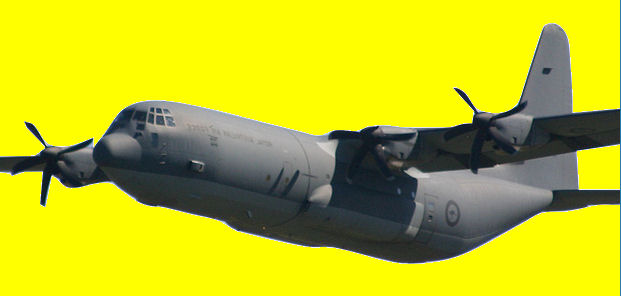
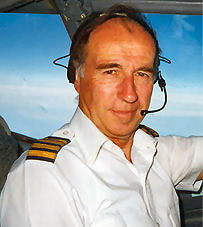
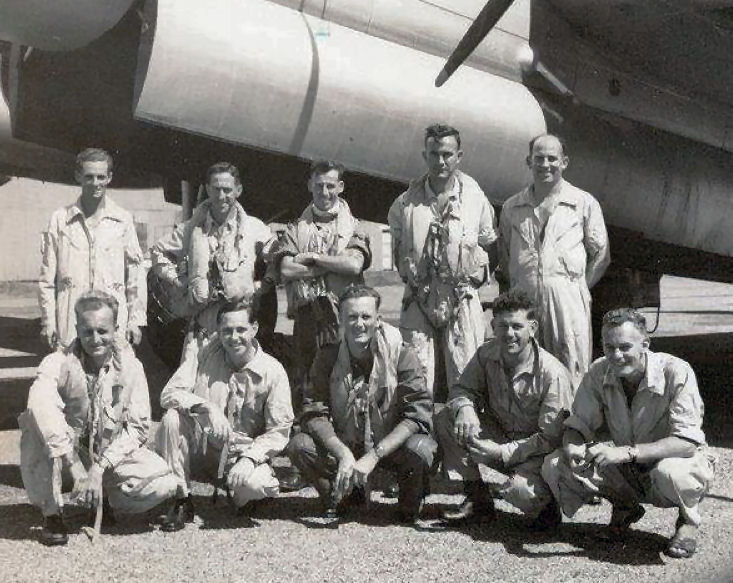 lagoon at the other. Crocodiles drifted menacingly in a nearby swamp,
occasionally seizing an unwary dog and making it risky for anyone
walking around the area, especially at night.
lagoon at the other. Crocodiles drifted menacingly in a nearby swamp,
occasionally seizing an unwary dog and making it risky for anyone
walking around the area, especially at night.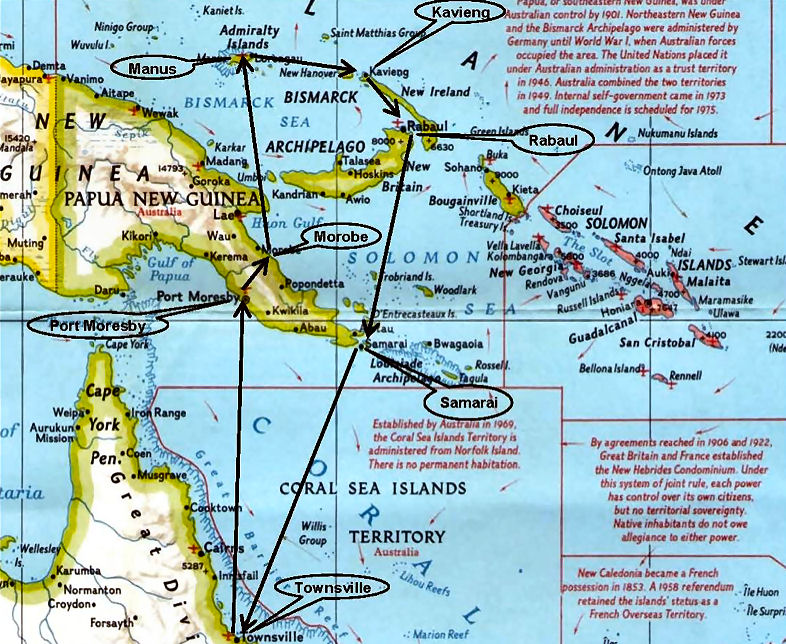 Peninsula. The airstrip of Finschafen, once defended by
hordes of Zero fighters, is visible through cloud gaps on the left while
beyond the right wing is Cape Gloucester on the western reaches of New
Britain. Leaving land at Cape King on Umboi Island, the aircraft heads
north out over the Bismarck Sea.
Peninsula. The airstrip of Finschafen, once defended by
hordes of Zero fighters, is visible through cloud gaps on the left while
beyond the right wing is Cape Gloucester on the western reaches of New
Britain. Leaving land at Cape King on Umboi Island, the aircraft heads
north out over the Bismarck Sea.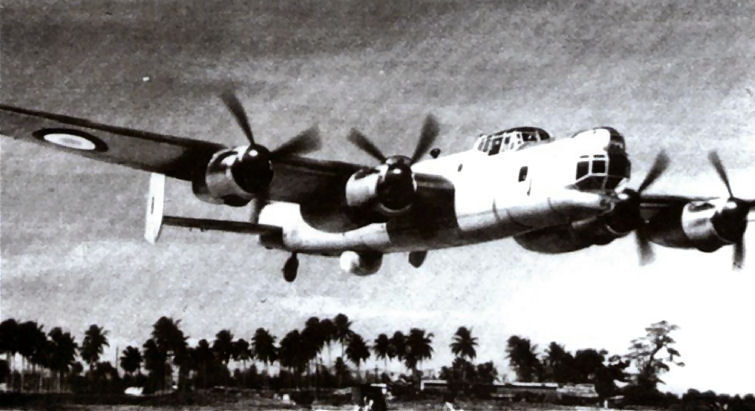 usually gave the rear gunner (who had his back to the engine), an
unwanted thrill.
usually gave the rear gunner (who had his back to the engine), an
unwanted thrill.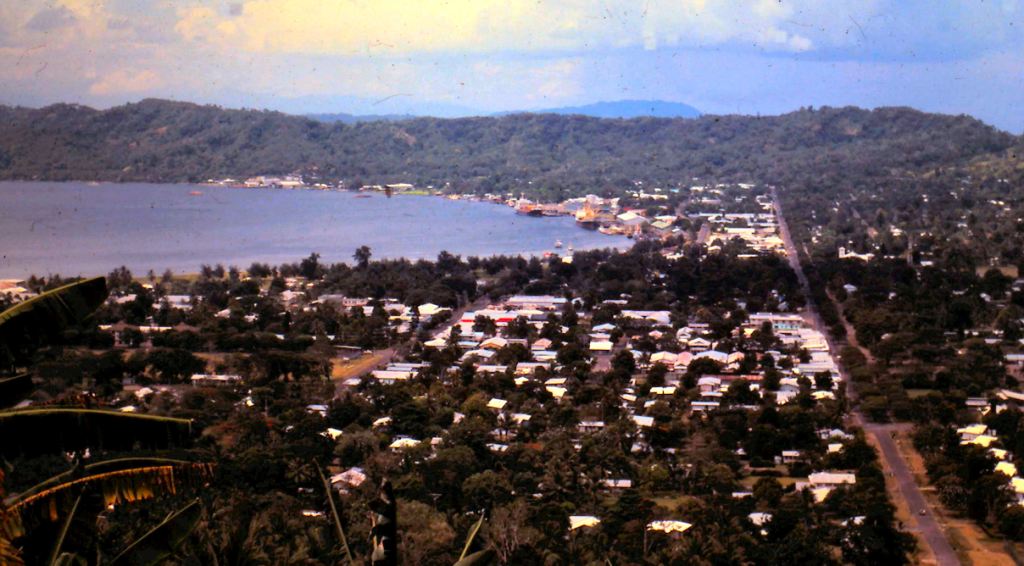
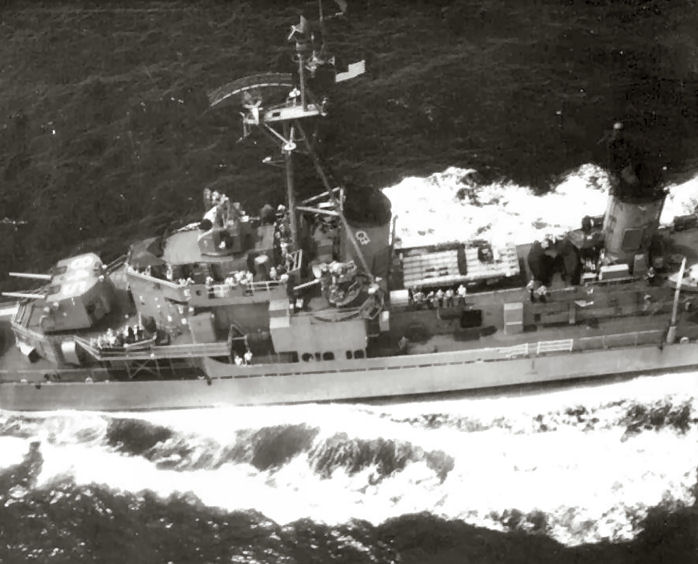 This usually
meant a fly-past at 500 ft parallel to the ship’s course while the
signallers would take pictures with a large F51 hand-held camera and
might even try their luck at sending greetings in Morse code using an Aldis lamp.
This usually
meant a fly-past at 500 ft parallel to the ship’s course while the
signallers would take pictures with a large F51 hand-held camera and
might even try their luck at sending greetings in Morse code using an Aldis lamp.